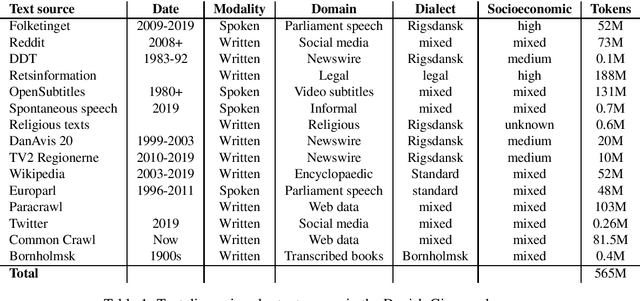Jacob Aarup Dalsgaard
Is a prompt and a few samples all you need? Using GPT-4 for data augmentation in low-resource classification tasks
Apr 26, 2023Abstract:Obtaining and annotating data can be expensive and time-consuming, especially in complex, low-resource domains. We use GPT-4 and ChatGPT to augment small labeled datasets with synthetic data via simple prompts, in three different classification tasks with varying complexity. For each task, we randomly select a base sample of 500 texts to generate 5,000 new synthetic samples. We explore two augmentation strategies: one that preserves original label distribution and another that balances the distribution. Using a progressively larger training sample size, we train and evaluate a 110M parameter multilingual language model on the real and synthetic data separately. We also test GPT-4 and ChatGPT in a zero-shot setting on the test sets. We observe that GPT-4 and ChatGPT have strong zero-shot performance across all tasks. We find that data augmented with synthetic samples yields a good downstream performance, and particularly aids in low-resource settings, such as in identifying rare classes. Human-annotated data exhibits a strong predictive power, overtaking synthetic data in two out of the three tasks. This finding highlights the need for more complex prompts for synthetic datasets to consistently surpass human-generated ones.
The Danish Gigaword Project
May 08, 2020
Abstract:Danish is a North Germanic/Scandinavian language spoken primarily in Denmark, a country with a tradition of technological and scientific innovation. However, from a technological perspective, the Danish language has received relatively little attention and, as a result, Danish language technology is hard to develop, in part due to a lack of large or broad-coverage Danish corpora. This paper describes the Danish Gigaword project, which aims to construct a freely-available one billion word corpus of Danish text that represents the breadth of the written language.
 Add to Chrome
Add to Chrome Add to Firefox
Add to Firefox Add to Edge
Add to Edge